As news of the effectiveness of a handful of different COVID-19 vaccines broke over the last month or two, the nation’s attention turned to difficulties surrounding their storage and distribution in what some are calling the biggest logistical challenge in history.
Most vaccines only need to be kept at 2-5°C. However, two of the recently developed COVID-19 vaccines require significantly colder temperatures, adding to the logistical complexity of their storage and distribution.
Tozinameran, Pfizer’s COVID-19 vaccine, must be kept at or below -70°C for example. Massachusetts-based Moderna’s vaccine for the deadly virus also require subzero temperatures (around -20°C) to maintain optimal effectiveness.
Getting vaccines to those who need it hinges on a vast network of refrigeration equipment known as the cold chain or the controlled temperature chain (CTC). For this post, we’re going to focus on that cold chain, its composition, and some of the technology behind each link.
Development
Vaccine development is a painstaking process, involving multiple phases designed to test efficacy and safety, often taking place over the course of multiple years. However, COVID-19’s transmissibility and overall prevalence led to the development of vaccines within one calendar year, the fastest vaccine development in history.
Low-temperature storage is required to protect the vaccine’s constituent parts – such as antigens, weakened virus particles, and bacteria throughout that process – from exploratory research to clinical trials involving thousands of participants.
Some examples of the equipment used to cool such crucial materials are cold rooms and ultra-low temperature freezers (ULTs). The equipment used to keep the vaccines themselves cold once they’re developed is very similar, which we discuss later in this article.
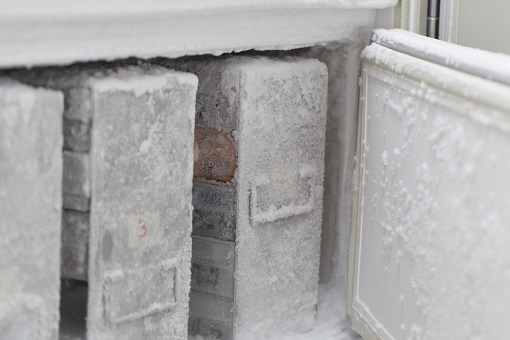
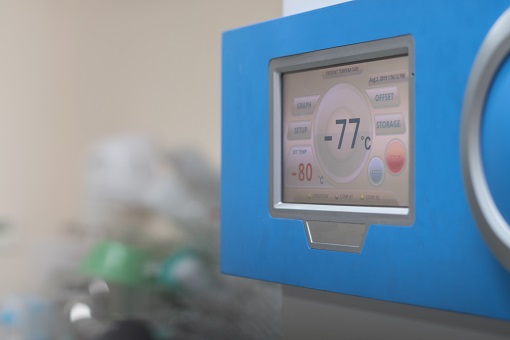
Storage
Once a vaccine has been developed, it must then be mass produced. This takes place in large manufacturing environments, like Pfizer’s plant in Kalamazoo, Michigan, for example. From there, vaccines are shipped out to distribution centers, where they're stored until needed for the next step of the chain.
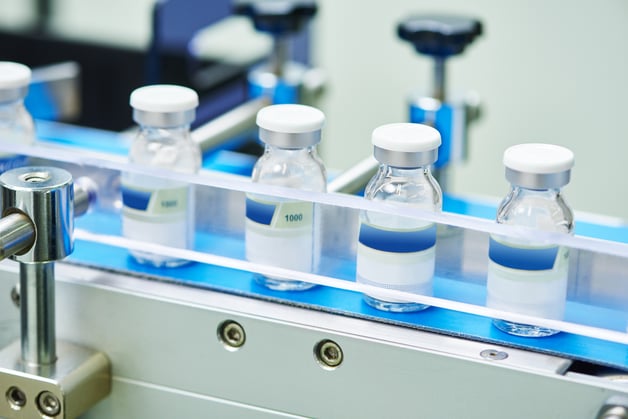
Depending on the demands of their service areas, these facilities have equipment as small as cooler-sized deep freezers up to walk-in cold rooms. Below is a list of some common examples of cold chain storage equipment.
ULT freezers: Ultra-low temperature freezers range in size from that of a cooler up to larger units as big as a refrigerator or wardrobe. The term ultra-low temperature is typically used to describe temperatures between -50° and -100°C, with temperatures below that referred to as cryogenic. ULT freezers come in various sizes, temperature ranges, and levels of control. Some are as simple as a standard deep freezer, while others are medical-grade equipment complete with digital controls and other features.
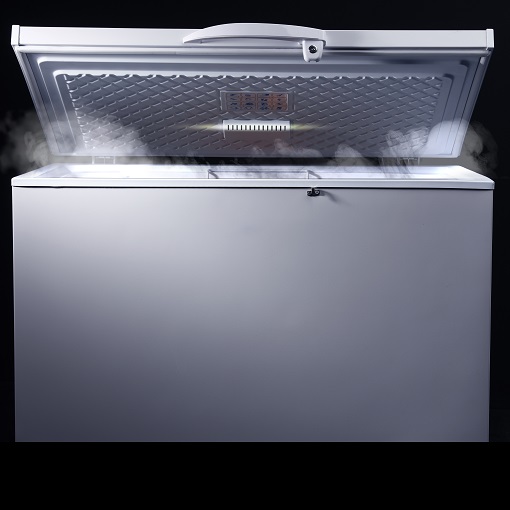
ULT freezer design varies depending on the application, but cascade and autocascade systems are popular. Some refrigerants used for these systems are CO₂, ammonia, R-134A, and R-23. These freezers come in a variety of sizes and portability. Some manufacturers of these freezers include SP Scientific, Thermo Fisher Scientific and Stirling Ultracold, among others.
Cold rooms: The name says it all – these are entire rooms and even warehouses conditioned to the temperatures and humidity needed to maintain vaccine effectiveness. Such facilities are often seen in commercial food storage and are practical for the large-scale storage of vaccines that don’t require subzero temperatures.
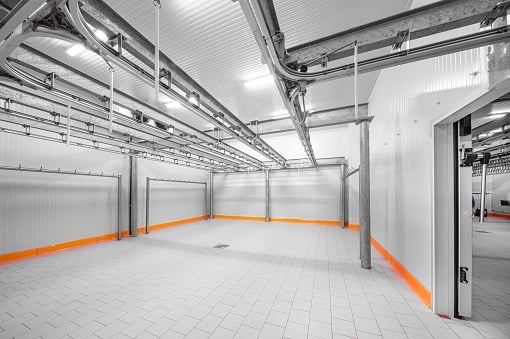
Unfortunately, COVID-19 doesn’t fit that description, and its rapid spread and the similarly fast effort to find a vaccine means that purpose-built cold storage warehouses won’t be very practical for COVID specifically. To compensate, logistics companies have repurposed existing warehouses to hold hundreds of standalone ULT freezers – known as freezer farms – capable of storing millions of doses.
Transportation
Pharmaceutical giant McKesson was tasked by the US government to handle the bulk of vaccine distribution in the U.S., which will be parsed out to the FedExes and UPSs of the world. Getting hundreds of millions of vaccines to communities around the country will require countless rail cars, barges, container ships, tractor-trailers and more – the backbone of the world’s cold chain. Let’s look at some of the soldiers that make up this army of vehicles and equipment.
Passive containers: These are cooler-sized, insulated boxes kept cold with ice - or dry ice in the case of Pfizer’s COVID-19 vaccine. The extremely low temperatures required to store some of the COVID vaccines means distribution via area clinics and pharmacies will likely be ineffective. Rather, the Centers for Disease Control said that centralized sites with adequate equipment will be the primary dispensaries.
Pfizer is relying in part on passive containers to distribute their COVID vaccine. These are essentially boxes containing dry ice and vaccines which have GPS-based temperature sensors. An example of a passive container using dry ice is below.
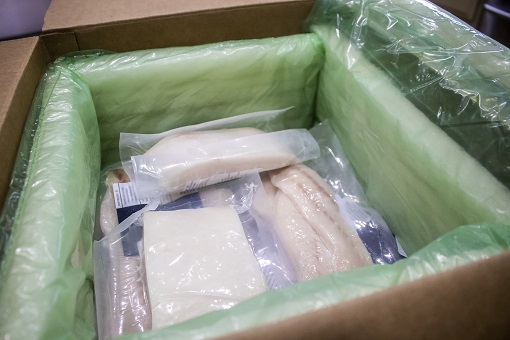
Refrigerated shipping containers: The international trade of perishable goods has long depended on refrigerated intermodal containers to deliver foods and other goods safely. There are two primary types of this equipment: integrated containers and porthole containers. The former are self-contained units with their own cooling function, capable of sustaining temperatures as low as -20F. Porthole containers are containers with built-in connections – portholes – that join it with a cooling system.
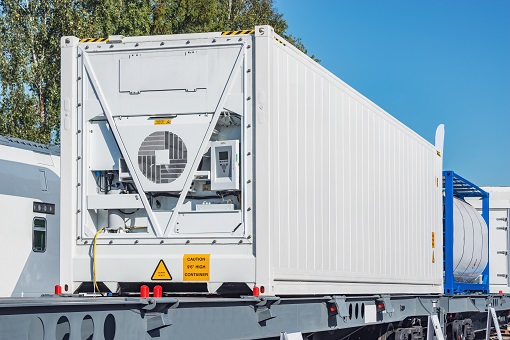
Integrated systems, like the one pictured above, are popular because they can be precisely controlled, making them suitable for a wide range of cargo. However, despite the fact that these containers aren’t capable of reaching the -70F temperatures needed for Pfizer’s vaccine, they’re still likely to play an important role in its distribution.
By shipping the dry ice and vaccine-filled passive containers in refrigerated shipping containers -20F, the dry ice’s lifespan is essentially doubled, said Carrier CEO David Gitlin in an interview with CNBC in November.
Refrigerated trailers: These are truck trailers outfitted with units designed to condition the trailer for the transport of perishables. Some of the refrigerated intermodal containers outlined above can be used as trailers, while others are designed exclusively for over-the-road transportation, like the example pictured below.
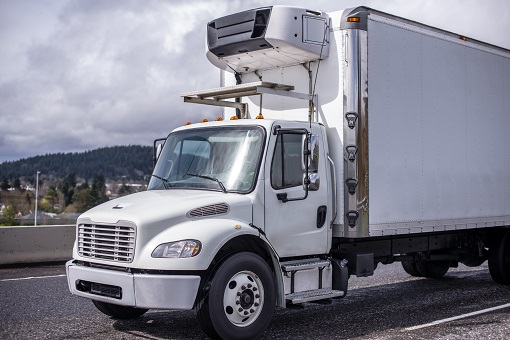
These trailer-mounted units, though mostly designed for transporting food will serve to provide a cold, stable environment to prolong the lifespan of dry ice, similar to the intermodal units we mentioned above.
So, the challenge is known and it’s a big one. However, the speed with which these vaccines were developed and approved is an excellent example of what’s possible. Super Radiator Coils is proud to support manufacturers of some of the equipment mentioned in this post.
Don’t get left out in the cold when it comes to heat transfer information. To stay up to date on a variety of topics on the subject, subscribe to The Super Blog, our technical blog, Doctor's Orders, and follow us on LinkedIn, Twitter, and YouTube.










